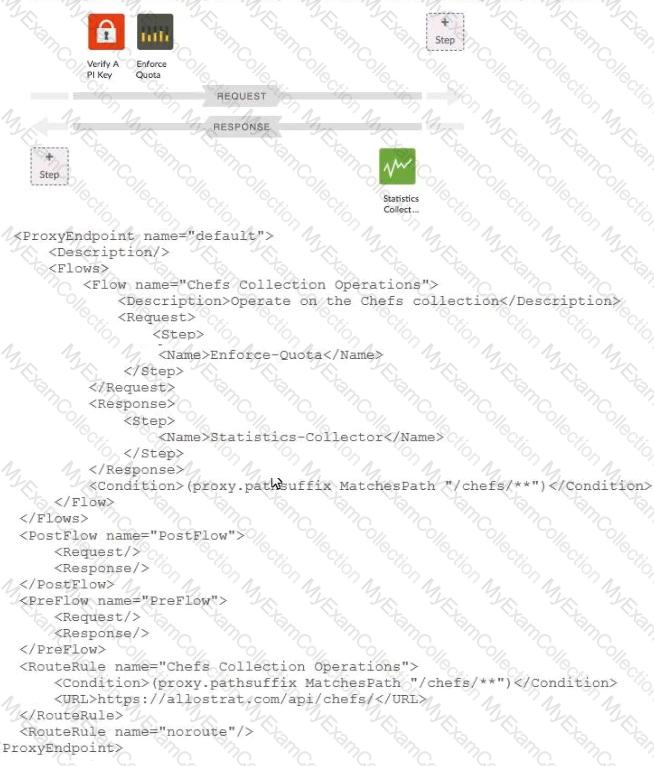In Apigee Quota policy, if it is essential that you do NOT allow any API calls over the quota, which configuration option is used?
Which feature can be used to automatically distribute traffic across multiple target servers'?
What happens to the API request processing when more than one of the conditional flows in a proxy is matched''
You have a single back end that needs to be exposed to customers using different API request and response payloads You need to allow these different request types without breaking existing implementations What should you do?
While testing your Apigee API proxy, you discover that the TargetEndpomt that is called is not what you expect. You have verified that there is a RouteRule that matches conditions, and should be called. What should you do?
Which policy can be used to restrict access to API resources based on the client IP?
You have the following requirements for your API:
• Authenticate users.
• Identify applications.
• Log update events to StackDriver
• Enforce quotas based on Product configurations
• Alert when total API latency exceeds 500 milliseconds
Your Apigee Edge API proxy is currently implemented with the following Proxy Endpoint configuration
 Which above 2 requirements have been met with this configuration? Choose 2 answers
Which above 2 requirements have been met with this configuration? Choose 2 answers
As an API Engineer you have been asked to automate the build process for Apigee deployments. You decide to build a new tool to deploy the API Bundles using the Apigee Management API. What would be the correct approach?
Your project is growing, and there have been several instances of confusion about the naming of data fields. What should you do?
You need to make multiple target system calls in parallel for a single inbound request The response should return to the client app as a single object What should you do?

